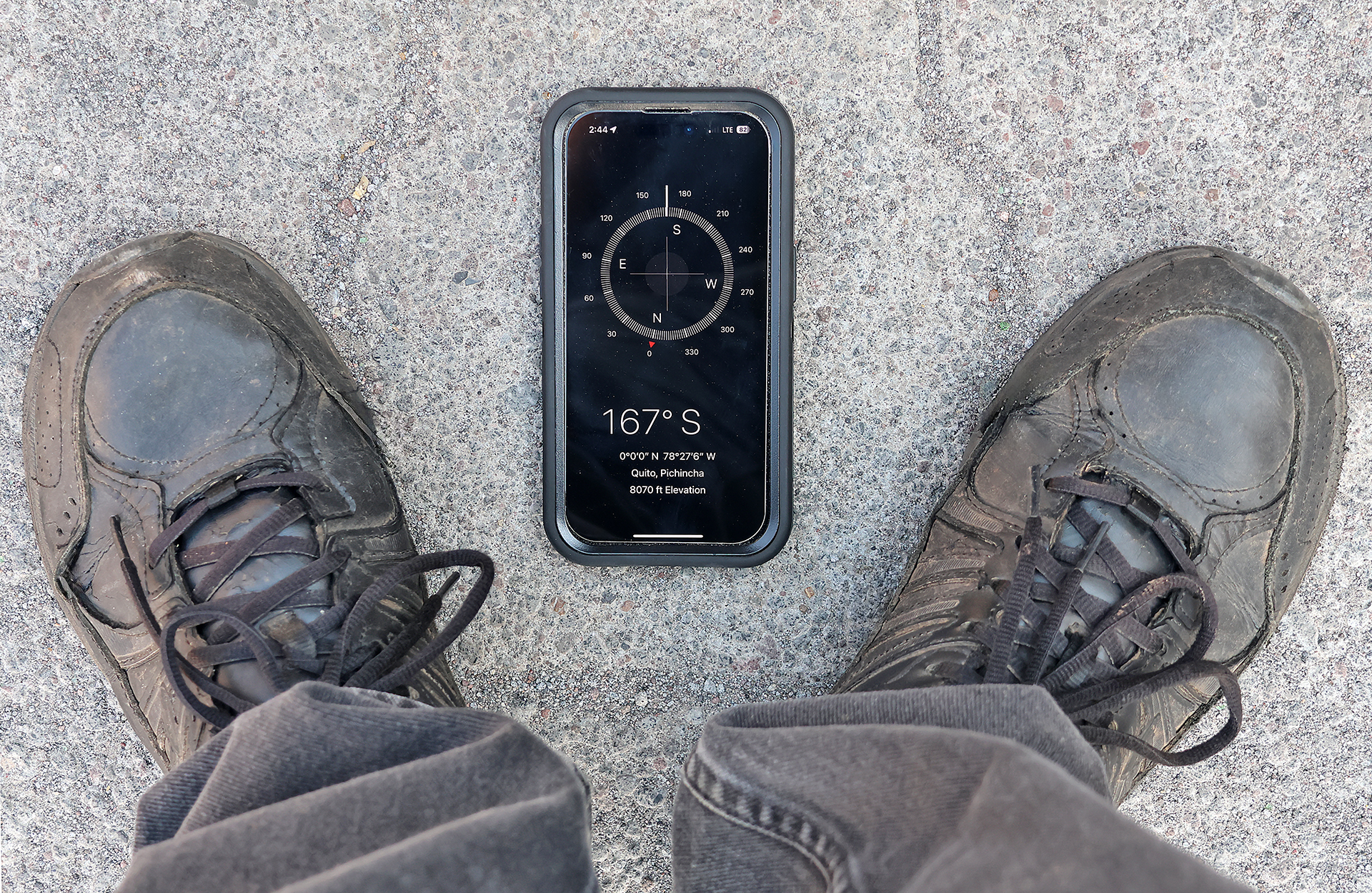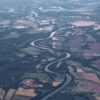The main reason why I traveled to Ecuador is for the quest to reach the equator on the equinox so that I can claim to have been in spring, summer, autumn, and winter within a split second — but things do not always work out as intended; and I cannot either confirm or deny that I accomplished this goal.
Equator. Ecuador. Equinox?
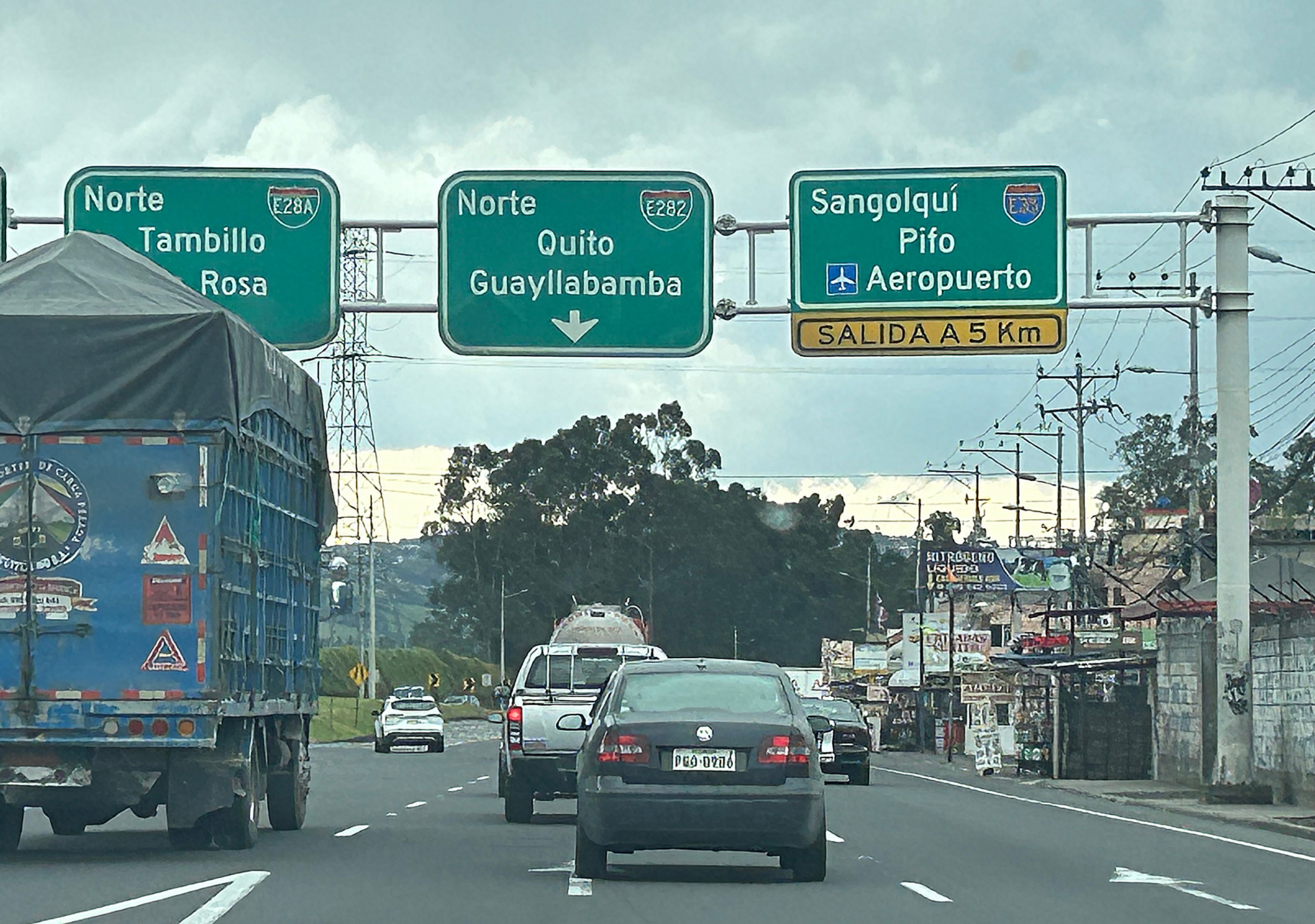
We left the hotel property prior to 9:00 in the morning to arrive at Museo Solar Quitsato, which supposedly has the most accurate marking of the equator, with a margin of error of one millimeter. The 67.4 kilometers from the hotel property to the destination south of the town of Cayambe would consume approximately one hour and twenty minutes; so we figured that we would arrive, park the rental car, and have plenty of time for photographs prior to the time of the equinox occurring at 1:19 in the afternoon on Monday, September 22, 2025…
…or so we thought.
We were doing well on time heading north on Ecuador National Highway E35 just after passing the town of Santa Rosa de Cuzubamba and started to round a curve towards the left up a hill — and traffic was suddenly at a complete standstill. People were walking down the hill. The ignitions of vehicles — including huge trucks — were turned off. Other vehicles turned around and headed in the other direction.
This was not looking good at all.
A police officer was on his motorcycle. When he was asked about the situation, he said that the road was blocked indefinitely; that he did not know when it would open again; and that the cause of the closure of the road was unknown to him.
Sitting indefinitely on the Pan American Highway fewer than 20 kilometers from our destination was not an option. We decided to take an alternate route via Ecuador National Highway E28B to arrive at Museo Solar Quitsato from the other direction on the Pan American Highway. We would be there by 11:00 in the morning, which was still plenty of time until the occurrence of the equinox.
When we arrived at Museo Solar Quitsato, its gates were closed. Rocks and boulders were in the middle of the road, along with what appeared to be a smashed pole — around all of which I had to carefully navigate the rental car. A mound of sand approximately four feet tall blocked the entire width of Ecuador National Highway E35; and in front of it was a black circle where a fire had burned. Motorcycles were parked at the closed entrance of Museo Solar Quitsato. Hundreds of people were milling about behind the mound of sand that blocked the Pan American Highway. The area had no presence of police officers anywhere; and nothing was organized. The scene was almost dystopian.
Several attempts to contact employees at Museo Solar Quitsato were unsuccessful. As we were unable to ascertain as to whether this scene was that of some sort of civil unrest or a celebration of the equinox, we decided to turn around and drive greater than an hour to one of the less accurate sites that mark the equator. If we left at that moment, we would arrive at 12:48 in the afternoon, which still allowed 31 minutes to prepare for the equinox.
I had not thought about using the compass that is installed on every Apple iPhone; but between the two locations, we were at 0.0.0 multiple times, both driving alongside and crossing 0 degrees latitude.
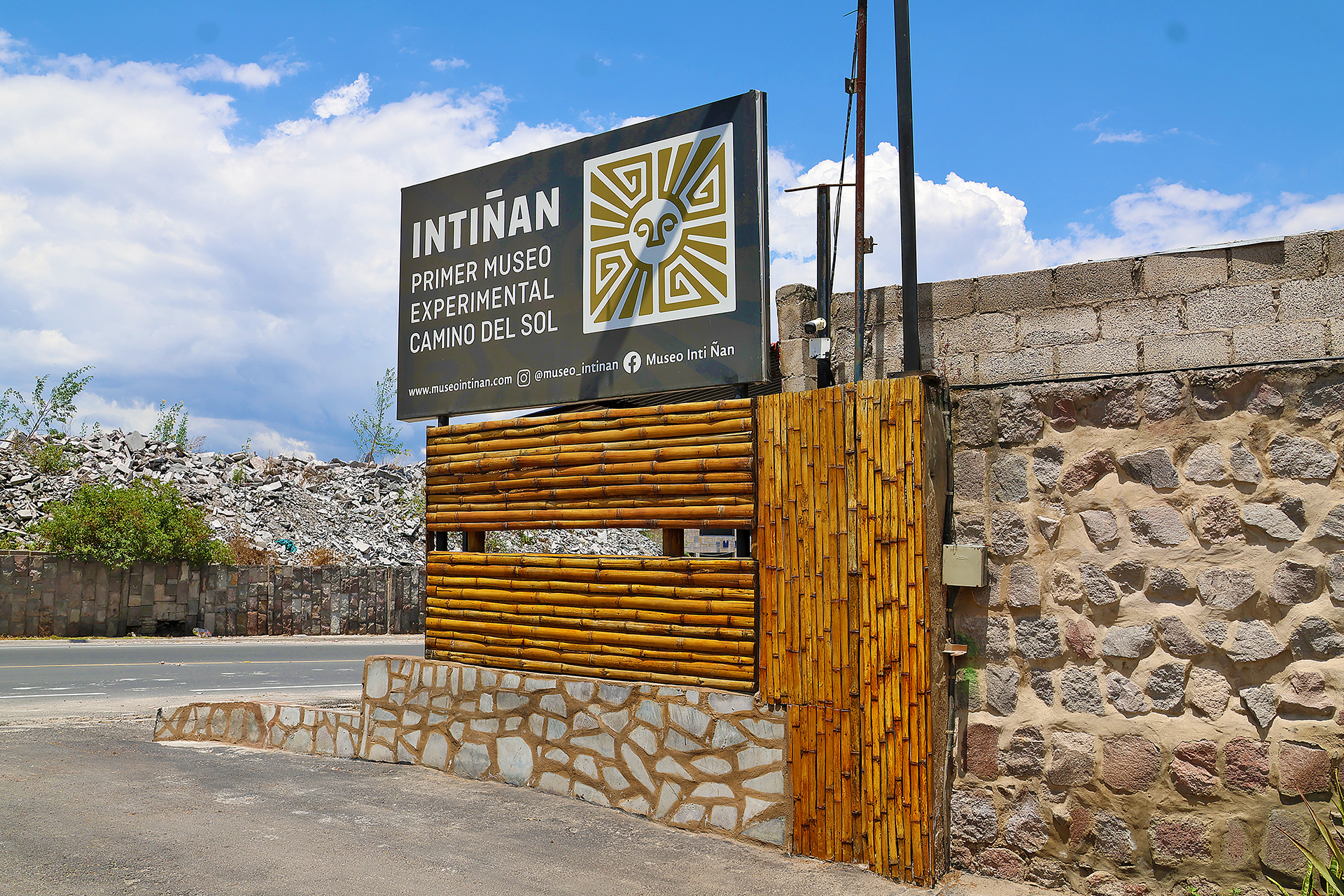
Once we arrived at the Intiñan Solar Museum at 12:46 in the afternoon, a spot was actually available in the small parking lot. The admission was paid. Few people were in attendance.
We asked an employee where the equator was actually located so that we can stand on it during the time of the equinox at 1:19 in the afternoon.
“The equinox already occurred at 12:19”, she said.
My heart dropped. I was deflated. How could this have happened after all of the research that was done and all the time that was allotted for this day?
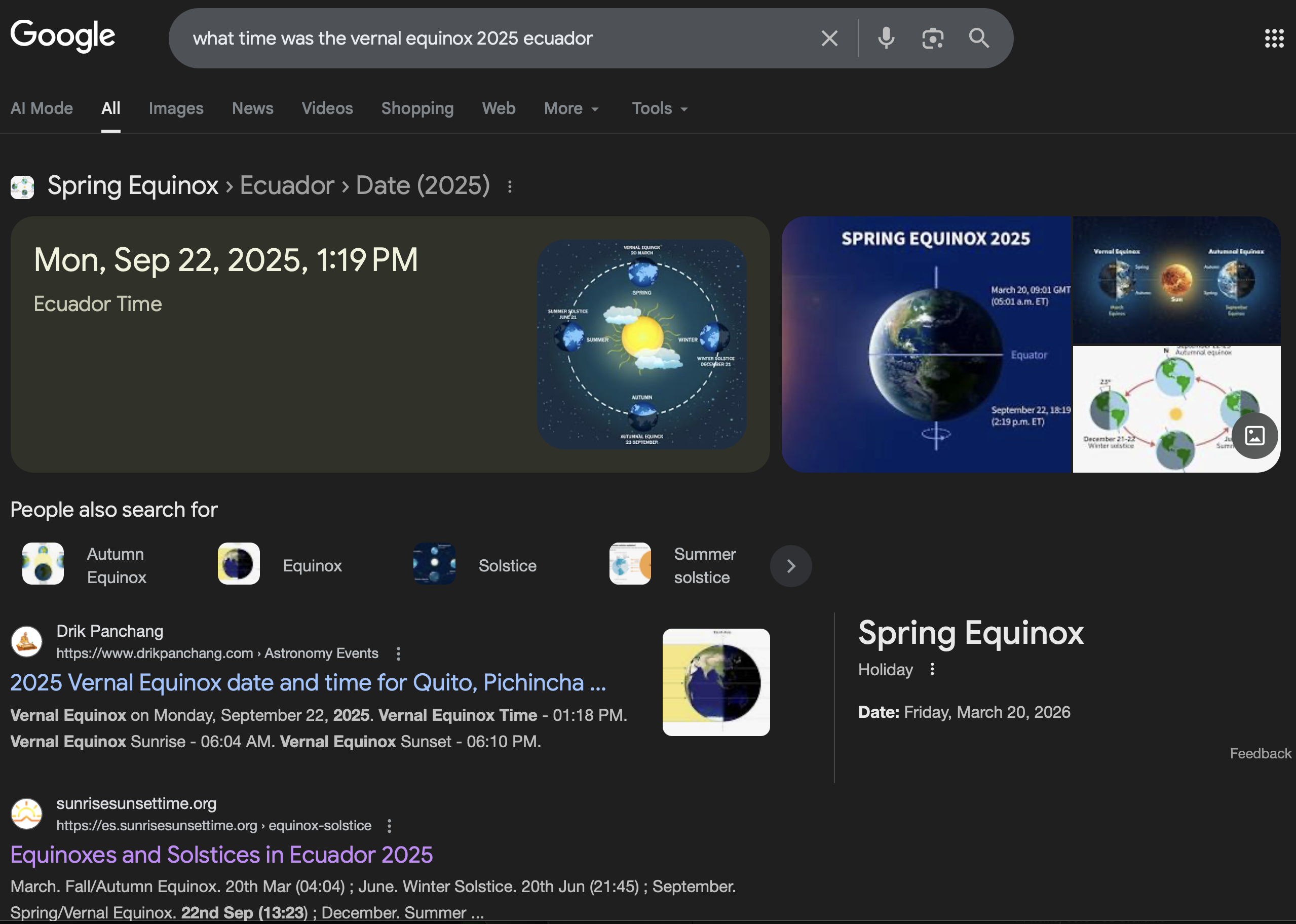
Many sources that I found on Google all indicated that the vernal equinox was to occur at 1:19 in the afternoon on Monday, September 22, 2025…
…but the employee said that during the vernal equinox, our shadows would be directly under us, as the sun would be directly overhead. We looked down. Our shadows were slightly askew.
To round out the day, the last stop was Mitad del Mundo monument, where for centuries people thought marked the location of the equator — but the equator has been confirmed to not be anywhere on the property. It was still an interesting place to visit.
Final Boarding Call
This experience was both frustrating and fulfilling: frustrating because I wanted to experience all four seasons within a split second; but fulfilling because I was in the winter, spring, summer, and fall within minutes. That is still amazing.
Did I actually experience all four seasons within a split second? I cannot prove that I did; but I also cannot confirm that I did not.
I might try this again on the equator in another country in the future — although few countries actually have the equator dissect them…
The photograph at the top of this article shows one of the many times when my feet straddled the equator on the day of the vernal equinox. All photographs ©2025 by Brian Cohen.
